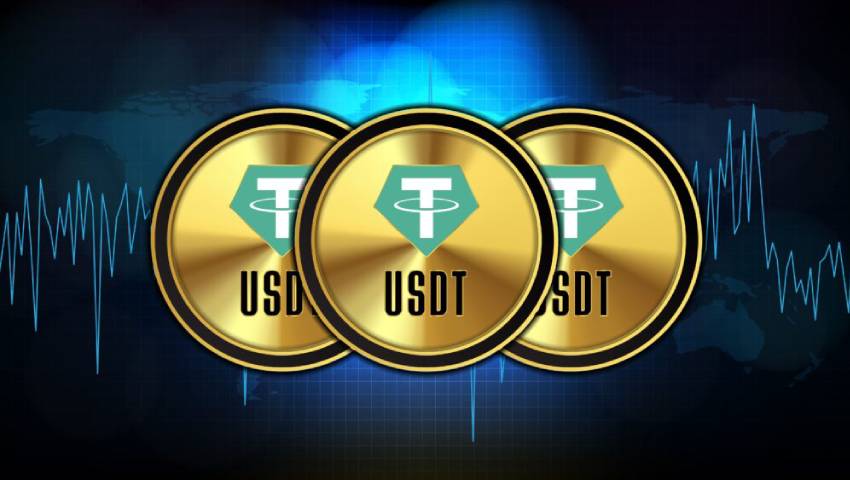
- 12/02/2025
- MyFinanceGyan
- 172 Views
- 4 Likes
- Cryptocurrency, Investment
Understanding the Role of Stablecoins in the Crypto Market
In this blog, we explore the growing significance of stablecoins in the crypto market, delving into their concept, rising acceptance, and their potential to drive financial inclusion. Stablecoins are digital assets designed to provide price stability by being pegged to traditional assets like fiat currencies, commodities, or even other cryptocurrencies. Acting as a bridge between the volatile world of cryptocurrencies and traditional finance, stablecoins offer new possibilities for the unbanked, facilitate seamless cross-border transactions, and push the boundaries of financial technology. However, their rapid adoption also raises important questions about risks, regulatory challenges, and the broader implications for the global financial system. By navigating these aspects, users can better harness the power of stablecoins while remaining mindful of their limitations.
The Bridge Between Fiat and Crypto Amidst Crypto Volatility:
Stablecoins occupy a unique position in the cryptocurrency ecosystem, addressing one of its most significant barriers: volatility. While traditional cryptocurrencies like Bitcoin and Ethereum experience dramatic price fluctuations driven by market forces, stablecoins are designed to maintain a consistent value. This stability is achieved by pegging them to a reserve of stable assets—whether it’s a fiat currency like the US dollar, a commodity like gold, or even another cryptocurrency.
The primary goal of stablecoins is to combine the benefits of cryptocurrencies—such as security, privacy, and fast blockchain transactions—with the steadiness of traditional financial instruments. This stability makes them versatile tools in the digital economy:
- Store of Value: In volatile markets, stablecoins provide a secure way to preserve wealth.
- Medium of Exchange: They enable quick, efficient transactions without the fear of sudden value drops.
- Unit of Account: Stable pricing allows them to be a reliable measure of value in the crypto space.
Practical Applications of Stablecoins:
- Financial Inclusion: Stablecoins offer safe and accessible means to store money, especially for those without access to traditional banking services. This reduces financial exclusion and empowers individuals with greater control over their finances.
- Peer-to-Peer Payments: They facilitate instant, low-cost payments, especially useful in rural areas or regions with limited banking infrastructure.
- Access to Financial Services: Stablecoins can be used to secure loans, make investments, and participate in other financial activities, helping individuals improve their financial standing.
Moreover, stablecoins encourage the digitization of transactions, reducing reliance on cash and promoting the broader adoption of digital payments. This shift can lead to reduced transaction costs, increased efficiency, and improved security.
The Growing Acceptance of Stablecoins:
Despite regulatory uncertainties, stablecoins are witnessing increased adoption in the crypto market. Their unique ability to offer stability in an otherwise volatile environment has made them attractive to both individual users and businesses. From facilitating cross-border payments to serving as collateral in decentralized finance (DeFi) platforms, stablecoins are proving their value across various sectors.
The Potential Impact on Financial Evolution and Inclusion:
Stablecoins have the potential to reshape the global financial landscape by accelerating the digitization of transactions. They can make payments faster, cheaper, and more transparent, fostering financial inclusion by providing access to essential financial services for the unbanked and underbanked populations worldwide.
Examples of Stablecoin Use in Financial Inclusion:
- Micro-loans for Small Businesses: Stablecoins can be used to offer micro-loans to small enterprises, fostering economic growth and job creation.
- Online Payments for Goods and Services: Stablecoins simplify online transactions, expanding access to global markets and digital services.
- Remittances: Sending money across borders becomes cheaper and more efficient, benefiting families and communities dependent on remittance flows.
While stablecoins offer transformative potential, it’s crucial to acknowledge the risks and challenges associated with their use.
The Flip Side of Stablecoins:
Despite their many advantages, stablecoins are not without risks. Regulatory uncertainties, technological vulnerabilities, and market dynamics pose significant challenges:
- Regulatory Uncertainty: The legal status of stablecoins varies across jurisdictions, creating ambiguity for both users and developers.
- Technological Risks: As blockchain technology evolves, stablecoins remain susceptible to smart contract bugs, hacking, and other vulnerabilities.
- Market Volatility: While stablecoins aim to maintain a steady value, factors like fluctuations in underlying assets or regulatory shifts can affect their stability.
Common Risks Associated with Stablecoins:
- Market Volatility: Although pegged to fiat currencies, stablecoins can still experience fluctuations, albeit less severe than other cryptocurrencies.
- Fraud and Security Risks: Cases of fraud and security breaches have been reported, emphasizing the need to choose reputable stablecoin providers.
- Regulatory Challenges: The lack of clear regulations can create legal and compliance risks for stablecoin users.
Case Study: The Fall of TerraUSD
One of the most notable examples of the risks associated with stablecoins is the collapse of TerraUSD (UST) in May 2022. UST, an algorithmic stablecoin pegged to the US dollar, lost its peg and traded below $1, triggering a cascade of events that shook the entire crypto market.
Key Factors Behind TerraUSD’s Collapse:
- LUNA Sell-off: LUNA, the sister token used to maintain UST’s peg, experienced a massive sell-off, undermining the stability of UST.
- Anchor Protocol Withdrawals: Anchor Protocol, a platform offering high-interest rates on UST deposits, saw significant withdrawals, reducing demand for UST and accelerating its devaluation.
- Bitcoin Price Decline: The broader decline in Bitcoin’s price affected investor confidence in cryptocurrencies, including UST.
- System Instability: TerraUSD’s complex incentive mechanisms failed to withstand the large-scale sell-off, leading to a catastrophic collapse.
The fallout from TerraUSD wiped out over $40 billion in value, with LUNA losing over 99% of its value. This incident highlighted the inherent risks in algorithmic stablecoins and underscored the importance of robust regulatory frameworks and risk management strategies.
Conclusion: Navigating the Future of Stablecoins
Stablecoins represent a powerful tool in the evolving financial landscape, offering stability, efficiency, and opportunities for financial inclusion. However, their adoption must be approached with caution, given the regulatory uncertainties and technological risks involved. As stablecoins continue to shape the future of finance, it’s essential for users, investors, and policymakers to stay informed and vigilant.
Start Investing in Cryptocurrencies: Open a Free Account on CoinDCX: https://join.coindcx.com/invite/n75xR
Disclaimer: The views expressed in this article are personal and intended for educational purposes only. They do not constitute financial advice or product recommendations.



